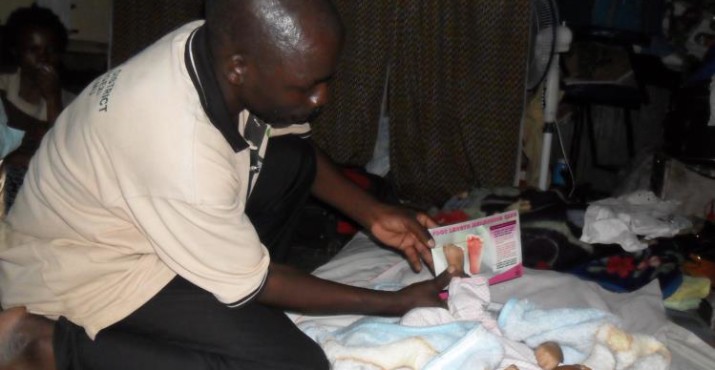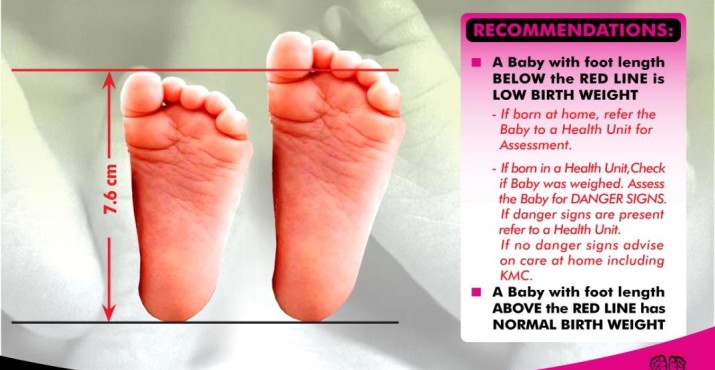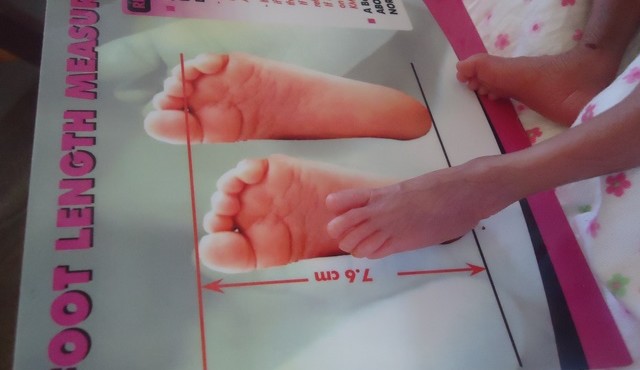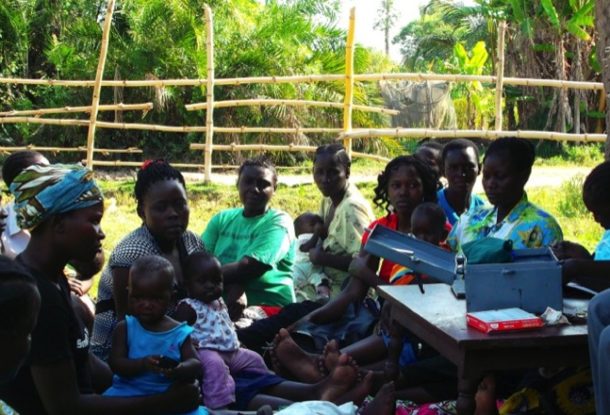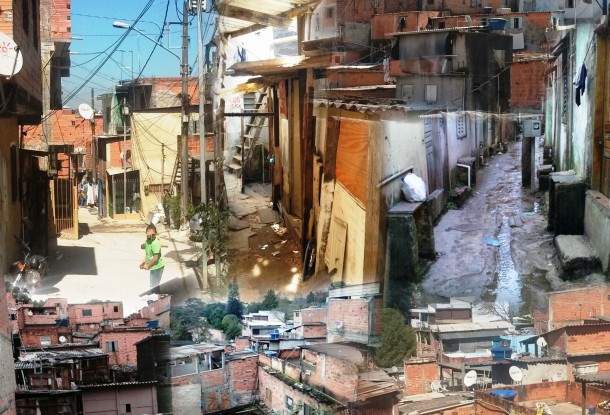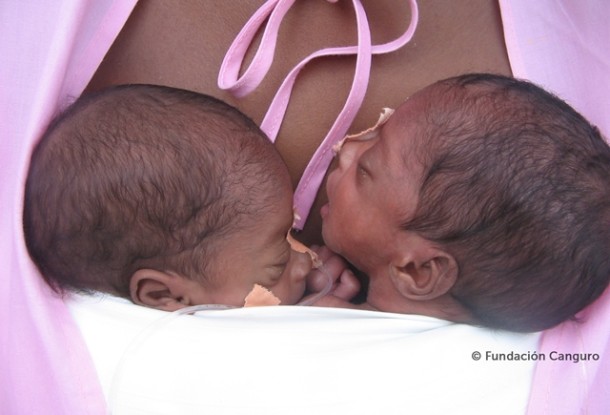Innovation Summary:
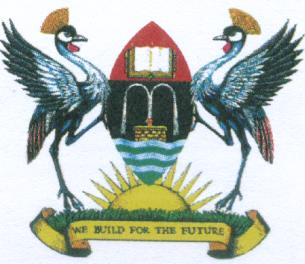 In Uganda, the current focus of care is at health facilities, with no objective methods for early identification of high risk groups of newborn babies at the community level and no follow-up mechanisms to monitor physical and neural development and care. High Risk newborn babies are most vulnerable to brain damage if they are not identified early, do not receive adequate treatment or do not obtain ongoing care [1].
In Uganda, the current focus of care is at health facilities, with no objective methods for early identification of high risk groups of newborn babies at the community level and no follow-up mechanisms to monitor physical and neural development and care. High Risk newborn babies are most vulnerable to brain damage if they are not identified early, do not receive adequate treatment or do not obtain ongoing care [1].
This project will test the feasibility and effect of an integrated model for early identification, care and follow up of high risk babies in facilitating early childhood development and to inform scale-up in eastern Uganda. Using a foot card to measure the foot length of a newborn baby, delivered outside health facilities by community health workers, will facilitate timely identification and referral of low birth weight/preterm babies to health facilities for proper management. In addition, a danger sign card will be utilized to identify sick newborn babies (high risk babies), and the geographic information system will facilitate follow-up care of all high risk babies.
Gallery
Impact
Expected Impact:
- 200 babies will be identified as high risk using danger sign screening and foot-length cards and will receive additional follow up care by health workers
- There will be a 30% improvement in attainment of the mile stones of High Risk Babies
- 1200 mothers and (and other significant family members) will be counseled on newborn care practices
- 150 Community health workers will be trained in counseling in community based maternal and newborn care practices and identification of high risk newborns
We shall support this project and ensure follow up of every high risk baby for proper neural development
-Dr. James Waako-Medical Superintendent, Iganga Hospital
Innovation
In Uganda, the current focus of care is at health facilities, with no objective methods for early identification of high risk groups of newborn babies at community level and no follow-up mechanisms to monitor physical development and care. Poverty, ignorance and long distances to health facilities hinder access to newborn care services [3]. Our project will strengthen the health system to improve access to quality care for the most vulnerable infants to ensure full childhood brain development.
Our idea integrates use of a Foot Length Card for identifying preterm/low birth weight (LBW) babies by CHWs, use of a danger sign screening card to identify and refer sick newborns to health facilities for quality care, and GIS to locate and enable follow up care and monitor brain development. Foot length of a newborn baby within the first five days after birth is a surrogate measure of birth weight, with a cut off of 7.6cm for LBW [1-2]. Therefore, use of the foot length card by CHWs will enable early identification of LBW and preterm babies at community level and facilitate referral to health facility for care. The CHWs will also utilize a low-cost danger sign card to screen for neonatal conditions vulnerable to mortality and brain impairment and refer for timely, quality care at health facilities.
Collaboration
Funders:
Saving Brains Partners
Key Partners:
- Iganga/Mayuge Demographic Surveillance Site of Makerere University –Uganda
- Iganga District local Government – Uganda
- Iganga District Hospital –Uganda
- Ministry of Health – Uganda
- Karolinska Institutet – Sweden
Implementation
Expected drivers:
- Community acceptability and positive attitude of mothers
- CHWs’ enthusiasm to look for high risk babies
- Buy-in of local administration
- Timely release of project funds to keep project activities going on smoothly
Expected Challenges:
- Limited availability of medicines and supplies required for treatment and care of high risk babies
- Iganga Hospital is currently undergoing renovation, making suitable infrastructure for deliveries and care of high risk babies a challenge
- Migration of mothers with their babies resulting in loss of follow-up
- Reluctance by mothers to participate in care for their babies
Continuation
In resource-constrained settings where mothers continue to deliver at home or in the community without skilled care at birth, use of foot length card (in absence of weighing scales) to identify low birth weight babies and danger sign screening card will be of importance in reducing on delays in seeking care, and improving high risk newborn outcomes.
Evaluation
This will be a quasi-experimental study. The intervention arm will include early identification, quality care provision and follow up. There will be assessments of mothers’ of high risk newborns (HRB) care practices, neural assessments to measure attainment of mile stones, and physical growth monitoring. These findings will be compared with the baseline results of a retrospective group of HRBs identified through hospital and CHW registers, which will be the control arm/group.
Impact
Cost:
The project is utilizing low cost technology for identification of high risk newborn babies: the foot card costs ~2 USD and the danger sign card is ~ 1 USD. Each CHW will use one card to identify several high risk babies. The CHWs work on voluntary basis and are paid only a transport refund of ~4 USDs when they are called for a meeting. These CHWs are part of Village Health Teams, existing structures in the current local health system. In addition the project will utilize existing health workers at health facilities who will only be given a Per diem during the training and for follow up activities.
References
Resources
-
Research
-
http://journals.plos.org/plosmedicine/article?id=10.1371/journal.pmed.1000273
-
http://www.ncbi.nlm.nih.gov/pmc/articles/PMC2975655/
-
http://www.ncbi.nlm.nih.gov/pmc/articles/PMC2762422/pdf/nihms122047.pdf
-
http://journals.plos.org/plosone/article?id=10.1371/journal.pone.0081610
-
https://www.youtube.com/watch?v=G_DvfypRYdI
-
-
Multimedia
-
Instruments and Batteries
-
Foot Length card: For identification of low birth weight babies/preterms. Uganda Newborn Survival Study (UNEST)
-
Danger sign screening card: For Identification of neonatal illnesses. UNEST.
-
Household Interview Tool: Assessment of maternal care practices for high risk newborn babies. UNEST (modified)
-
The Malawi Developmental Assessment Tool (MDAT): For neural assessments.
-
Observational Screener for Disability in Childhood: Screen for brain impairment
-
VHT Referral Form: For facilitation of referral. UNEST
-
